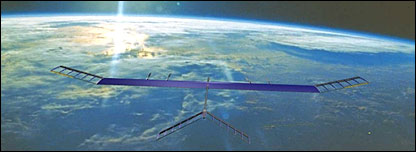The British Zephyr drone, which broke the record, charges its batteries in sunlight during the day and uses the electricity generated at night

A light unmanned aircraft powered by solar energy has broken the world record for the longest unmanned flight for an aircraft of its type. The plane, named Zephyr, belongs to the British security aviation manufacturer Qinetiq, which said it hovered for 54 hours during a test flight.
The researchers believe that this is the first time that a plane powered by solar energy has been able to operate on its own engines for two nights. The previous attempt to fly an unmanned aircraft for a long time was in 2001, when the Global Hawk jet drone flew for over 30 hours.
The 54-hour long flight of the Zephyr will not enter the Guinness Book of Records, and this is because there were no representatives of the FAI Air Sports Association present during its operation. However, they received advance notice of a second, 33-hour flight, which should take place soon. The flight may win an official record.
Zipper's development team said that whatever the outcome, they believe they have built a record-breaking aircraft. "This plane will fly higher and farther," says Kiras Kelleher, the technological director and "pilot" of the Zephyr to the BBC website.
Zephyr was initially designed to photograph a large helium-powered balloon that attempted to break the world altitude record for manned systems in 2003. This attempt ultimately did not come to fruition, due to a leak in the balloon (also made by Kinetic), however, the company continued to develop the Astrosphere aircraft for military applications, observations of the Earth and communication.
The experiment in question was carried out at the US Air Force Base White Sands in New Mexico, which is also used as a missile center. In the first flight, the drone, with its wingspan 18 meters, was in the sky for about two days before a malfunction developed that prevented the flight from continuing. A second scheduled flight was canceled due to a lightning storm.
"We were able to prove that the plane can fly on the solar energy that was converted to electricity during the two cycles of charging (during the day) and discharging (at night)," says Paul Davey, Zephyr's business development manager.

One response
The Heron cement (Machat) of Ihaii Airit has been breaking the record for years and reached 52 hours in a row, from a publication on the official website it stays for more than 45 hours http://www.iai.co.il/Default.aspx?docID=16382&FolderID=18900&lang=he&res=0&pos=0